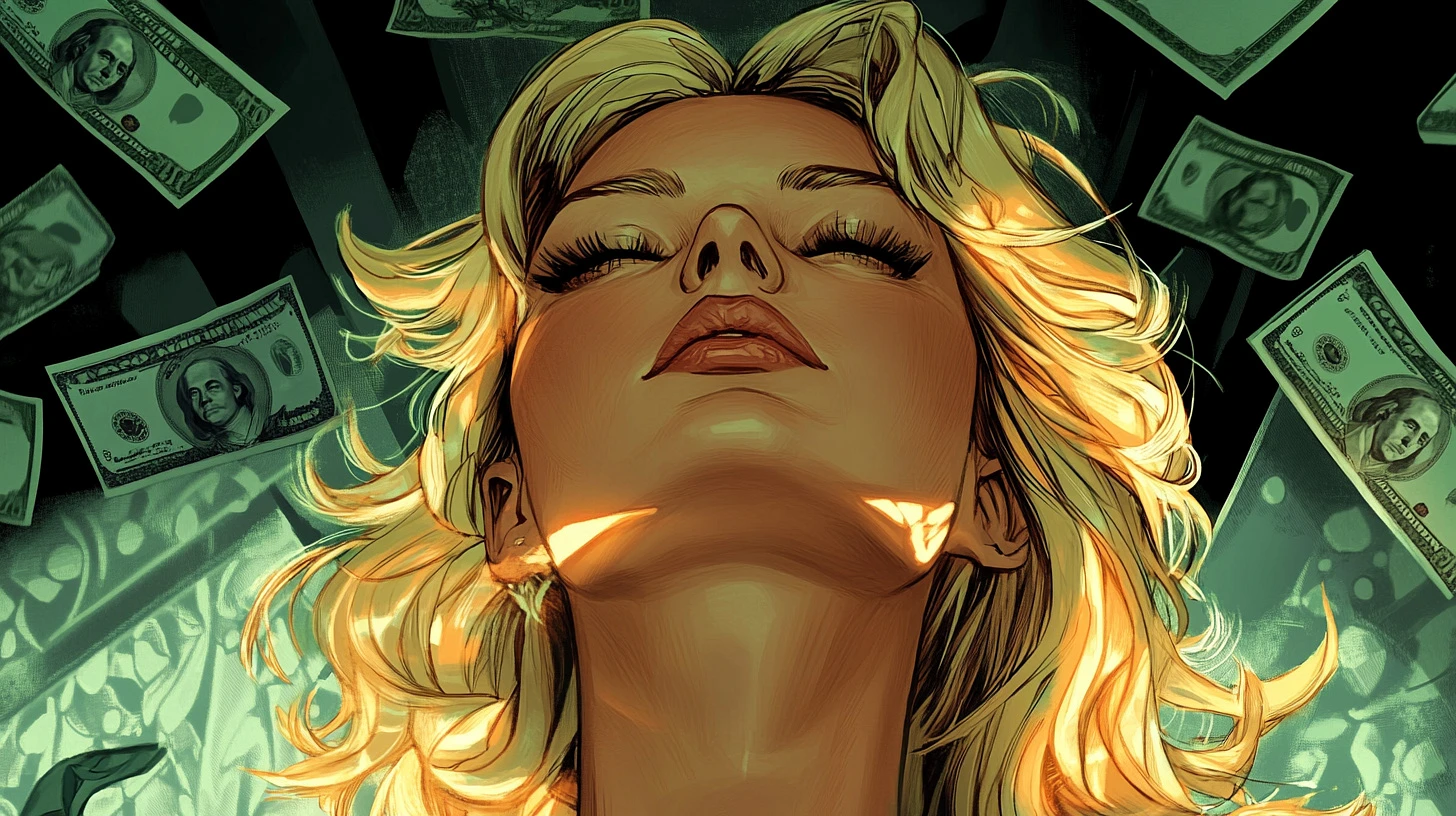What’s a Forex Swap: Beginner’s Guide

We are launching a series of articles that will be useful to everyone from beginners to advanced levels, since knowing the basics never loses its importance. Everybody knows that Forex is a market where traders buy and sell currencies. Have you ever wondered what there is to learn? Today’s a chance for you to get involved in overnight fees, as they are one of the fundamental aspects of trading. Sadly, rollover rates remain misunderstood. We have prepared this guide to easily explain every single nuance that could impact your trading decisions. Let's get it started. We promise, it won't be hard to understand.
What’s a Swap?
Simply put, if you keep a trade open for more than a day, a small amount of money may be added to or deducted from your account. A rollover charge is applied when trading using leverage.
Why Do Swaps Exist?
Overnight financing fees have been used for quite a long time, and they were originally invented to make commodity transactions more convenient: in particular, to increase the amount of assets and liabilities. You don’t have to take any additional actions because every broker automatically calculates and applies this info to the client's account. When there is a difference between the currencies in a pair, a rollover has occurred. Banks, along with financial organizations, establish these rates to regulate the economy, and currency traders automatically feel their impact when rolling over positions to the next day. This is why overnight costs should be considered in your trading strategy to avoid unexpected expenses. Therefore, we invite you to delve into this topic in more depth. Understanding rollover fees is like understanding the fine print in a contract—it’s what separates an average trader from a well-informed one.
For an example:
So, the most illustrative piece of knowledge starts here. Let’s say you opened the position with NZD/CHF (New Zealand dollar / Swiss franc) and left it open overnight.
- Interest rate in New Zealand: 5.50%
- Swiss interest rate: 1.25%
- Position size: 1 standard lot (100,000 NZD)
- Number of nights: 2
Scenario 1: Positive swap accrual
A trader bought the New Zealand dollar (NZD) and sold the Swiss franc (CHF). Since New Zealand's interest rate is higher than Switzerland's, he receives a positive swap.
Calculation:
Swap = (100 000 x (5,50% - 1,25%)) / 365 x 2 = $23,28 (credited)
Bottom line: The trader earned $23 just for moving the position.
Scenario 2: Write-off of negative swap
Now suppose the trader sold the New Zealand dollar and bought the Swiss franc. In this case, the interest rate of the sold currency is higher than that of the bought currency, which means a negative swap.
Calculation:
Swap = (100 000 x (1,25% - 5,50%)) / 365 x 2 = - $23,28 (charged)
Bottom line: Trader lost $23 due to negative swap.
Don’t worry about forgetting the particular details, it's the easiest thing in the world. Just put this information into action immediately. You can also make up your own case and do the math again. Thus, we have learned about the existence of positive and negative swaps. This means that they can either be an additional source of income or an extra expense for a trader:
-
Positive—money is credited to your account. Broker pays you for holding the position overnight.
-
Negative — money is deducted from your account. In this case, you pay for keeping the trade open overnight.
Now you see? This is kinda a financial pendulum you have to keep an eye on. Usually, there is a table in Meta Trader on the “Trading” tab, where you can find values for each swap. Understanding the types applicable to your trade is significant for managing trading costs while maximizing profitability. These are fundamentals and must not be overlooked.
How Do Swaps Work?
Traders dealing on short time intervals (scalpers, day traders) usually do not pay attention to them, as they do not keep transactions open for more than a day. But for those who trade long term (position trading), swaps could have a major effect on the profitability of a deal. So, as you may have guessed, there is no way to ignore them. What if we say they can be controlled? It really is possible, if you know the ways and subtleties. We are ready to tell you about those in the text below.
How to Avoid or Minimize Swaps?
We want to be savvy and thoughtful, so we gather a lot of useful insight from articles like ours. We need it to be able to manage the situation wisely. Therefore, let's explore this issue in detail.
Here we will give some practical advice to reduce swap costs:
1. It is much more favorable to choose brokers with minimum swaps—some companies offer Swap-Free options.
2. The most important thing is to close your trades before the end of the trading day. Swaps can't be applied intraday.
3. Use the “carry trade” strategy, where you are able to make money on interest rate differentials by choosing pairs with positive swaps.

Common Mistakes When Dealing with Swaps
We suggest not making a lot of swaps without fully understanding the above-mentioned basic principles. Why make the same mistakes that have already been repeatedly made by others? Well, we have a wonderful opportunity to learn from them.
Here is a list of common mistakes you may encounter:
-
Ignoring triples—failure to account for swaps Wednesdays will result in unforeseen costs. If you don't want to get a “triple” surprise because of your inattention, get it right.
-
Overleveraging—large positions tend to result in significant costs, especially if the swap is negative. This one is like an open faucet in an empty bathtub.
-
Lack of research—you should always research rates and market conditions before trading.
-
Misunderstanding Swap-free accounts—they're also called Islamic trading accounts, specially created for Muslims, which are halal in nature and make forex trading more accessible. It's not magic, it's just trading without 'percentage sins'.
-
Holding high negative positions—if unknowingly holding trades for several days or weeks without realizing they are paying a high negative each night. Over time, these small charges add up and eat into profits. If you plan to hold trades long-term, check if the currency pair has a positive swap or choose a different pair with lower swap costs.
We have introduced you to the most common mistakes in this type of trade, recommending you do not underestimate these cases. Swaps as a silent factor in your trading—if you don't pay attention, they might quietly erode your profits. We urge you to pay attention. It only seems like a minor change from the surface. In reality, they are like an oxygen fee. While you don't notice them, they are slowly but surely changing your balance. With this knowledge, you can adjust or expand your strategy, reducing swaps and even using them to your advantage.
More about swap-free
Let us add a few more words on the subject, as this may still be of wider concern than just to Muslims. For example, those who prefer long-term approaches without additional expenses. No religious confirmation is required here - just choose this account type when signing up or convert your existing account to a no-wap account. Some companies offer completely free rollover of positions, but with restrictions — a ban on trading on Friday or before weekends. It is important to study the terms and conditions of a particular broker: sometimes such accounts have hidden fees or less favorable trading conditions compared to standard accounts. So, keep this in mind: it can bring you added convenience and advantage.
Other Types
Knowledge is a power that anyone with serious intentions should possess. This knowledge turns you from a passive observer into an active strategist, able to profit even from seemingly technical nuances. Thus we propose to learn about all the existing types of today's term. Of course, they will all be indisputably needed.
Currency Interest Rate Swap
Buyer and seller conclude an agreement in which they exchange equal amounts but in different currencies. In addition, they undertake to pay each other interests on these amounts
Credit Default Swap (CDS)
This is insurance against risk in case someone fails to repay the debt. If an investor has bought bonds of a company, but is afraid that the company will go bankrupt, such insurance will be very useful for him. Then he will buy CDS from the bank: and if the company goes bankrupt, the bank will pay him the money. In cases where this does not happen, the investor simply pays the bank a small amount for the insurance.
Overnight
This one has to be one of the most well-known, even if you have never tried to delve into the subject. A short-term bank-to-bank exchange of currencies. One bank urgently needs Mexican peso and the other needs Swiss franc. They agree to exchange money today and return it tomorrow, but with a small surcharge. That's the payment for “oversaturating” the deal past midnight. It's like renting: if you rent an expensive apartment and live in a cheap one, you get an income. If it's the other way around, you have to pay.
Conclusion
So, what has been learned? A swap is a fee for carrying a position to the next day, which can also be an additional trading instrument. Think of it as a financial wind—if you position your sails correctly, it can push you forward rather than hold you back. Practice calculating it, monitor your trades and experiment with different strategies to see how it affects your results. When you gain experience, you can use it to your advantage and have more success.


